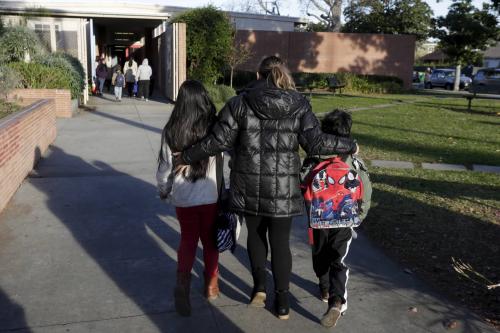Every parent recognizes the inextricable connections between where we live and the quality of our children’s education. In fact, for many families, the composition and quality of local public schools are primary factors in choosing a neighborhood and investing in a house or apartment. Families who can afford to choose where to live avoid communities where schools perform poorly, thereby fueling higher rents and property values in communities with highly regarded schools. In turn, local property values determine how much a jurisdiction can spend on teachers and school facilities. And as a consequence, schools in communities where lowcost housing is clustered often suffer from insufficient funding, obsolete facilities, and overextended teachers struggling to serve concentrations of needy students.
Public policies have helped shape today’s disparities in neighborhood affordability and school quality, although programs focused on affordable housing rarely take public schools into account and school officials typically assume that they have no influence over housing patterns. But policymakers can do better. By strategically addressing the connections between schools and housing, they can trigger positive feedback that enhances neighborhood vitality, improves school quality, and promotes equity and opportunity for families and their children. Most of these policies will be local, but the federal government has a role to play: deploying its considerable resources and leadership to encourage and support local innovation.
This paper focuses on four principles regarding the vitality and performance of schools and communities, discussing opportunities for constructive policy interventions, summarizing what we know about their likely effectiveness, and recommending next steps for the Department of Housing and Urban Development (HUD) and the Department of Education (DoED).
- Low-income children benefit from the resources and learning environment available at schools that also serve middle- and higher-income families.
- Even in settings where most students are poor, schools can succeed with the right resources and accountability.
- Kids perform better in school if they don’t change schools frequently, and schools perform better when they have lower turnover.
- Kids do better in school when they are healthy, well-nourished, and arrive at school ready to learn.




